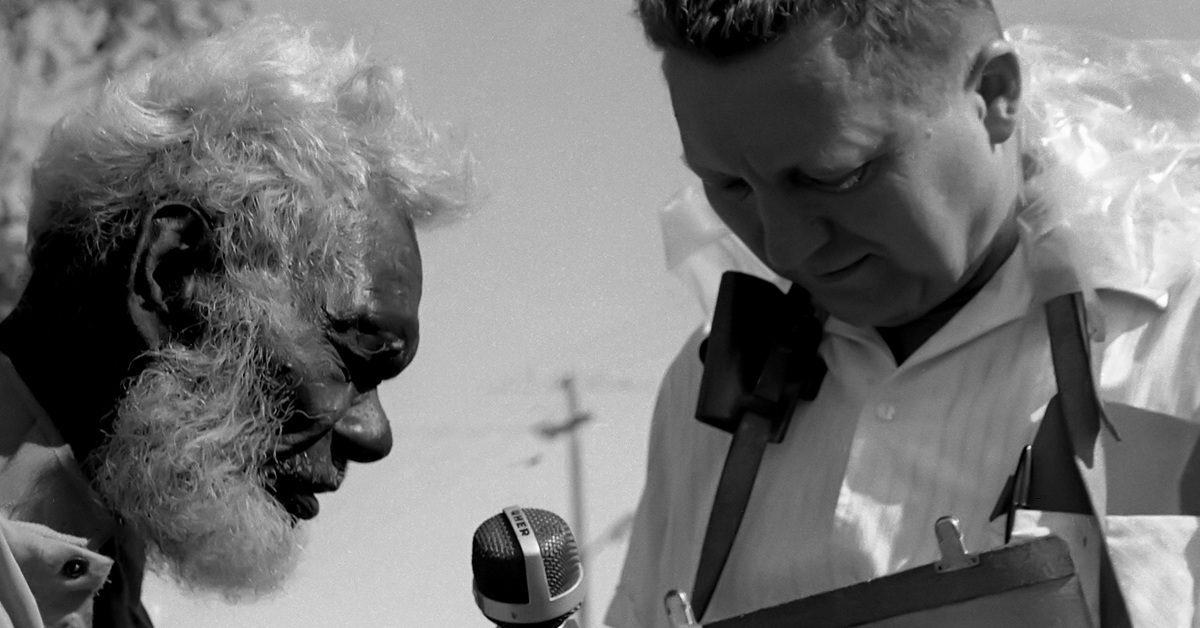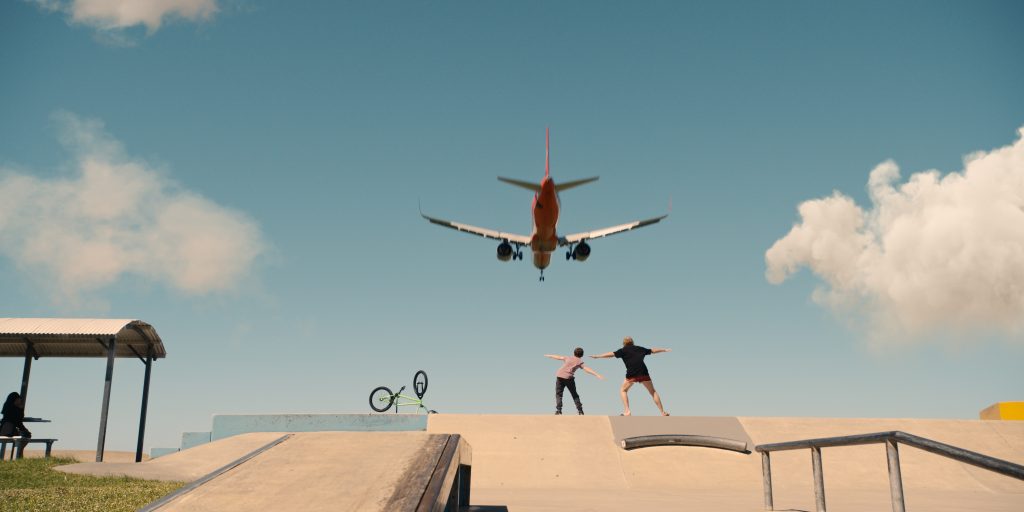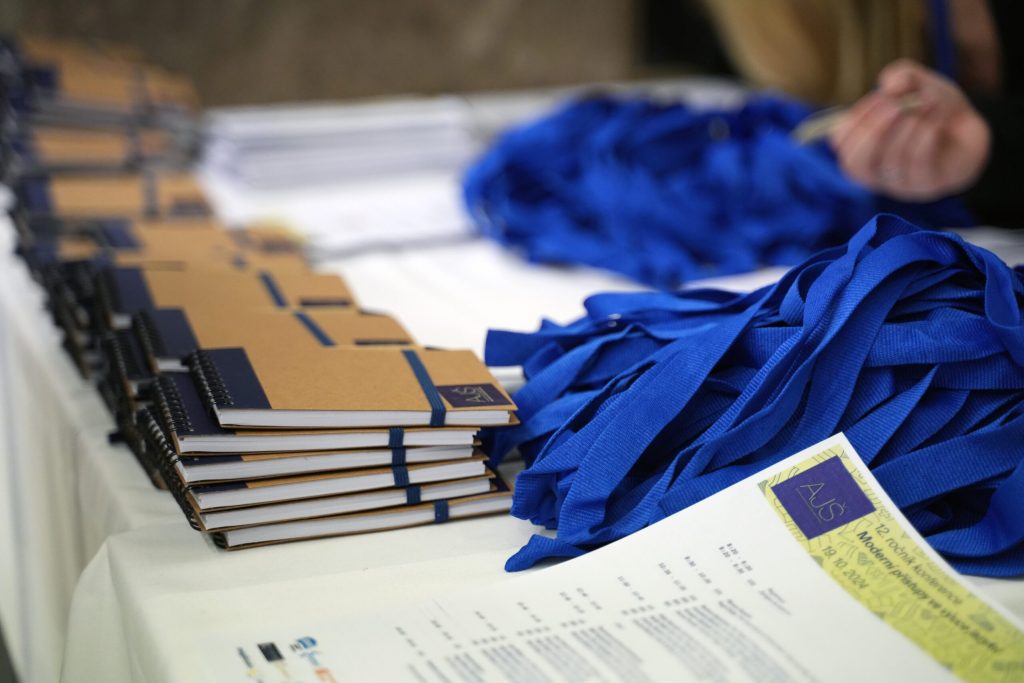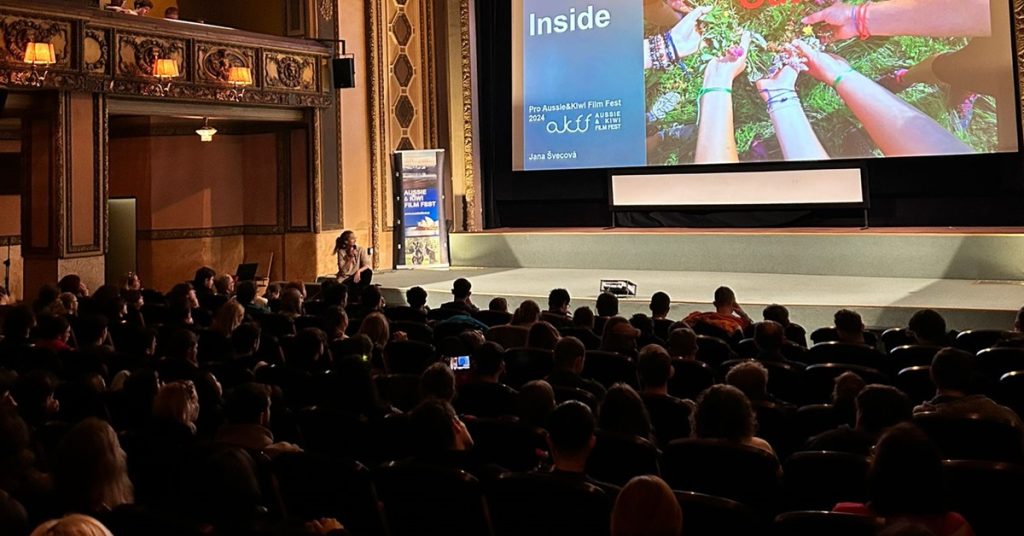In October 2023, the Australian Government Standing Committee on Indigenous Affairs in Canberra will receive nine restored documentary films about a unique Czechoslovak scientific expedition to Arnhem Land in 1969. As part of the accompanying program to the 10th edition of the AUSSIE & KIWI FILM FESTIVAL, we would like to invite fans of Australian culture and history to Písecká brána for a lecture by Petr Kostrhun, the head of the Centre for Cultural Anthropology of the Moravian Museum, about the fate of this historical expedition. The lecture will be complemented by a screening of the documentary EXPEDITION REMBARANKA 1969 (directed by I. Červenka, M. Švihálek, 2020) and the event will be held at 4pm on Tuesday, 17 October 2023. The event will also be an opportunity to view artifacts that scientists brought back with them from Australia 54 years ago. The event is part of the Fresh Senior program and held under the auspices of the district of Prague 6.
In 1969, a group of Czech scientists led by Jan Jelínek, anthropologist and director of the Brno Moravian Museum, set off on a research and documentation expedition to a remote area of northern Australia inhabited by the Rembarrnga people. The expedition’s several months of ethnological research yielded unique testimonies and material. After the expedition returned to Czechoslovakia, several documentary films were made and a number of exhibitions were also held. However, once the political situation in the country worsened, an information embargo took hold and this unique film material was subsequently discredited. But now, due to the recent discovery of the forgotten film material, the legacy of the Rembaranka 1969 Expedition has come back to life.
In the spring of 2017, one of our Czech-Australian compatriots flew to the Czech Republic, carrying with him copies of films that his father, cameraman Jiří Vrožina (1938–1993), had shot 50 years ago in Arnhem Land. These had been considered destroyed up to that point and when he handed them over to publicist and producer Milan Švihálka, he revived a story from 1971, when Czechoslovak Television launched a successful travel series called Za lidmi doby kamenné (In the footsteps of People of the Stone Age). After Vrožina emigrated in 1981, the series ended up locked up in a vault, and the films themselves were completely destroyed in July 1997 by a flood at the Ostrava television studio archive. At that point, Ostrava cameraman Jiří Vrožina was no longer alive, so if it weren’t for his son, this unique filmed testimony about the journey of Czech and Moravian scientists to these ‘people of the Stone Age’ – the Indigenous Rembarrnga people – would have been completely forgotten.
Cameraman Jiří Vrožina was in his early thirties when, in 1967, anthropologist Jan Jelínek offered him the opportunity to take part in a planned expedition to find “primitive” Australians. He was very interested. After all, he had been invited by a respected scientist, head of the Anthropos Institute of the Moravian Museum, who was also a world-renowned anthropologist. Despite his relative youth, he had extensive experience filming abroad. He had already filmed in Turkey, Brazil, Sicily and had taken part in several diving and maritime expeditions. And now Australia! Nine months in the bush, far from civilisation, in the middle of nowhere… But when he accepted the offer, he had no idea that this decision would fundamentally change the course of his life and the fate of his family.
The expedition was supposed to attempt to find and study the Indigenous people of the Rembarrnga clan, whose territory is located in the still sparsely explored interior of Arnhem Land, in the northernmost part of Australia. The expedition was on UNESCO’s list of urgently needed anthropological research. This study of First Nations Australians who still lived a hunter-gatherer way of life presented one of the last opportunities to document certain primitive processes and to ethnographically clarify the social meaning of rock art paintings, both of which are extremely important for the study and understanding of the global origins of culture. The sponsor of the exhibition became the Moravian Museum in Brno, famous in the past for a number of extraordinary scientific personalities, such as Professor Karel Absolon, a significant figure of European archaeology and the one who discovered the Venus of Dolní Věstonice.
The opportunity to film ‘the last witnesses to the Stone Age’ in the Australian outback interested not only Jiří Vrožina, but also the program director of Ostrava Television, Jan Neuls. Although back then television in Czechoslovakia only broadcast in black and white, Vrožina was given colour film – 16mm Gevaert film – on Neuls’ recommendation. As it turned out later, the quality of this film did not stand up to the demanding physical conditions of Arnhem Land, but fortunately the expedition was also co-financed by the Ford Foundation so the cameraman was able to buy higher quality Kodak colour film in Sydney for four thousand Australian dollars. The series In the footsteps of People of the Stone Age was therefore filmed on the highest quality film available at the time.
The route of the expedition led from Sydney across New South Wales, briefly touching the Lake District and the Murray River in the northwestern tip of Victoria, then turning into the neighbouring state of South Australia. Near the city of Adelaide, the expedition headed north. This was followed by a journey through arid and inhospitable regions of central Australia. There were several stops along the way that Jiří Vrožina used for filming. He visited Coober Pedy where opal is mined, went to Palm Valley with its preserved continental flora, and filmed the activities of the flying doctors as well as the School of the Air which taught school children on isolated farms using radio.
The story of the lost series
The expedition’s return home at the end of 1969 was a triumph. A travelling exhibition that summarised the never-before-seen scientific results was seen with great interest by people in a number of European countries. The colour series In the footsteps of People of the Stone Age and many other black-and-white documentaries on interesting facts about the land of the Southern Cross became the jewel in the crown of the newly launched Czechoslovak TV 2 channel. But normalisation which was already underway changed all that. For various reasons, almost all the members of the expedition became persona non grata. Fortunately, in 1981, the continent that Jiří Vrožina had become intimately acquainted with during a nine-month expedition welcomed him with open arms. His films however disappeared into a vault, and moreover, cut up, discredited by the regime and destroyed, they did not survive the 1990s.
Just like his former colleagues, Jiří Vrožina is no longer alive today. Everything that the expedition did in the wilderness of Arnhem Land was essentially supposed to be forgotten. However, almost exactly half a century later, the author of this article found out that the son of the expedition’s cameraman had discovered several boxes of 16mm films in a Sydney apartment. It turned out that these were relatively high-quality, but unedited copies of film footage from the bush. But no sound recordings were found with them.
The discovery was very much welcomed by the staff of the Australian Government’s Institute of Aboriginal and Torres Strait Islander Studies in Canberra, who understood that this was valuable visual material from both a scientific and documentary point of view. The technicians of this institution professionally digitised the films and Vrožina’s son Jiří brought electronic copies of the films from Australia to Ostrava in the summer of 2017. The idea was born in the Moravian Museum in Brno to process the films that had been found into a replica of Vrožina’s once successful cycle. The work of reconstructing the series (editing, commentary and sound) was undertaken by screenwriter and presenter Milan Švihálek, along with director and film editor Ivan Červenka and round the world sailor Richard Konkolski, who was moving back to the Ostrava region from the US at the time and who brought back the music collection of his professional video company Seven Oceans Video from Newport, USA. After several months, the series In the footsteps of People of the Stone Age was at least partially reconstructed. A unique five-part series of travel documentaries called Expedition Rembaranka 1969 was born – remembering eight men who set out half a century ago to one of the most isolated corners of the world to bear witness to the fact that the will to live of so-called ‘primitive’ people and their objective way of thinking are a treasure that can significantly enrich our sometimes overly proud modern civilisation.
This event is presented in conjunction with Villa Pellé at the Písecká brána cultural space as part of Prague 6’s Fresh Senior program. We would like to thank the event’s partners – the Moravian Museum, the municipal district of Prague 6, Villa Pellé and the Fresh Senior program.
We would also like to thank retired screenwriter Milan Švihálka for photographs and press information.



